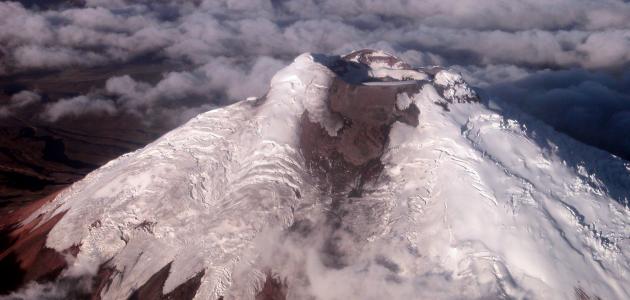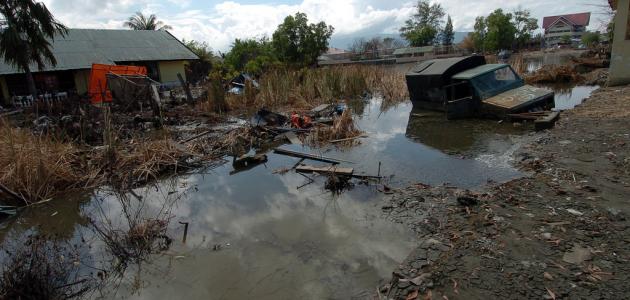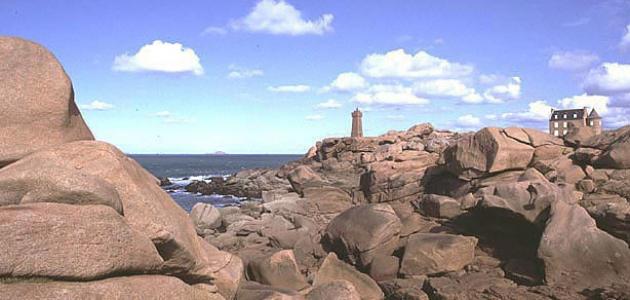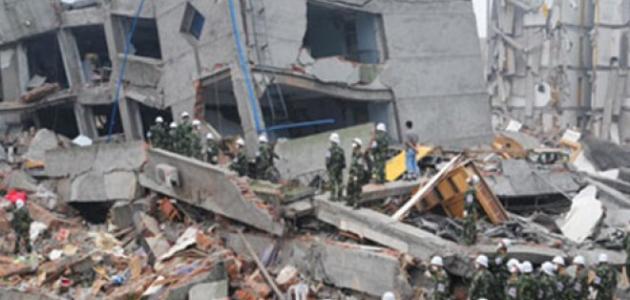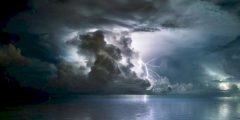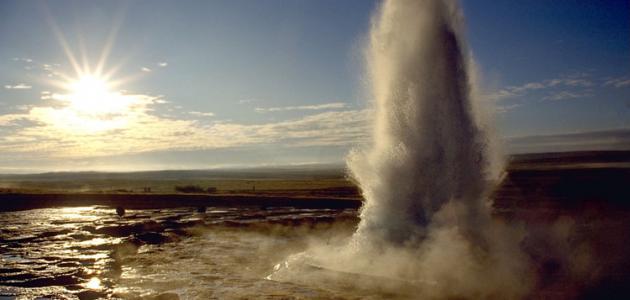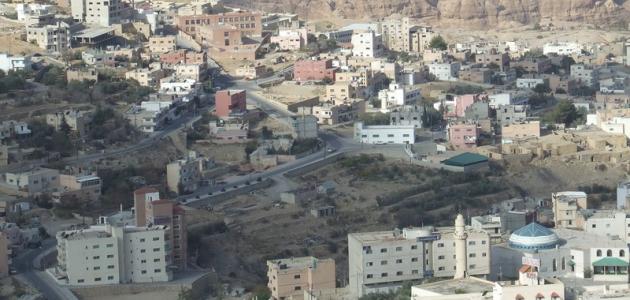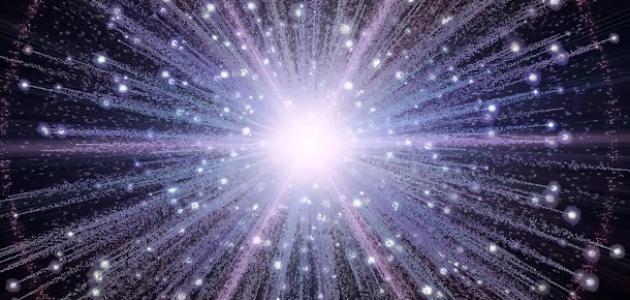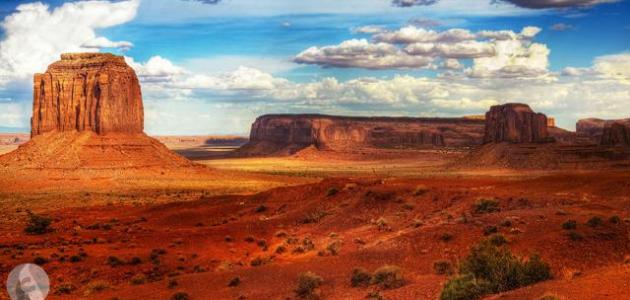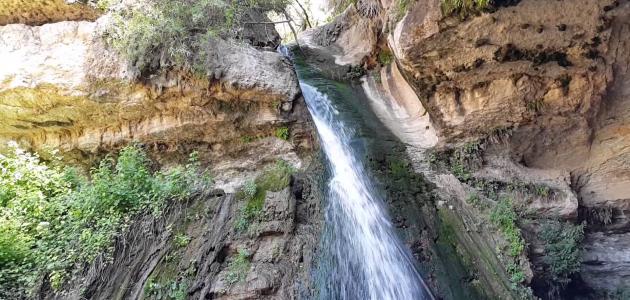Areas of volcanoes
Volcanoes are considered exits in the Earth's crust that allow the molten rocks present in the Earth's interior, called magma, to pass through them to reach the Earth's surface, and emerge in the form of a volcanic explosion accompanied by a flow of lava. It is the magma that has reached the surface, accompanied by gases, ash, and volcanic rocks. Volcanoes often arise as a result of the movement of tectonic plates and the interaction of their boundaries with each other. Therefore, they are concentrated in three main areas distributed as follows:
- Subduction zones at convergent plate boundaries.
- Rifts and Mid-Ocean Ridges at divergent plate boundaries.
- Hot spots.
Convergent plate boundaries
Volcanoes are active along areas where tectonic plates collide when each of them moves towards the other. According to the laws of physics, when two plates collide, the denser plate sinks beneath the less dense plate in a process called subduction. In the case of volcanoes, the boundaries are The convergence between an oceanic plate and a continental plate, and upon collision, the edge of the oceanic crust is subducted below the continental crust and sinks into the upper mantle. Ocean water mixes with the sediments located above the oceanic crust and reaches the mantle. This in turn reduces the melting point of the mantle, which increases the melting of rocks.[XNUMX] As the tip of the oceanic crust goes deeper into the mantle, it is exposed to more heat and pressure, and the rocks begin to melt more until their fusion is complete and magma is produced.
Read also:The phenomenon of the northern lightsThe magma then begins to flow upward through the cracks between the rocks; This is because its density is less than the density of the surrounding rocks, and it collects within gaps miles from the surface of the Earth’s crust known as the magma chamber. When a large amount of magma accumulates inside the chamber, it becomes unable to contain it, so the magma begins to rise again. Others until they reach the crater of the volcano and an explosion occurs.
Volcanoes are concentrated along the Pacific basin, which is bounded by convergent and transformative boundaries, especially at the edges of the Pacific Plate, the Cocos Plate, and the Nazca Plate, in an area called the Ring of Fire, from which about 80% of earthquakes around the world also originate. Examples of volcanoes and rifts in western North America, which are part of the Ring of Fire, are the following:
- The Cascade volcanic mountain range resulting from the subduction of the Juan de Fuca plate under the North American plate, which includes Mount St. Helens, Mount Hood, Mount Rainier, and other mountains.
- The Aleutian Islands chain located in the North Pacific Ocean near the US state of Alaska, resulting from the subduction of the Pacific Plate beneath the North American Plate.
- Central American volcanoes resulting from subduction processes at the Central American Trench.
- Vesuvius volcano in Italy.
- The San Andreas Fault, which is a transform fault.
Divergent plate boundaries
The largest concentration of active volcanoes around the world, i.e. about 80-90% of them, is located along the boundaries of divergent tectonic plates, especially at the boundaries of the oceanic plates, where most of the volcanic mountains are submerged under water. Volcanoes arise at these boundaries as a result of the movement of the two adjacent plates, moving away from each other. The other, so their boundaries diverge and the void resulting from their divergence is filled with volcanic magma that rushes from the upper mantle to fill the void and cracks, and freezes, forming a new oceanic crust, which leads to the formation of new rocks and the expansion of the ocean floor constantly and the emergence of new magma. Whenever the magma rushes to the top, the boundaries of the plates separated from the bottom rise. The ocean as a result of pressure on it from below, which results in the formation of submerged volcanic mountain ranges along divergent boundaries called Mid-Ocean Ridges, which are connected in the form of a network surrounding the Earth.
Read also:God's power in the universeThe Mid-Atlantic Ridge is one of the submerged mountain ranges, and the island of Iceland is located on it, which is one of the few locations where oceanic ridges rise above water level. Its surface witnesses a number of active volcanoes that take three types: Major in eruption; Basaltic eruption, which is the most common, Strombolian eruption, and Phreatomagmatic eruption.
Volcanoes also exist at the boundaries of divergence within continents, when the lithosphere witnesses extensional deformations resulting from a horizontal tension force exerted by the mantle layer during its movement from bottom to top, which leads to the expansion and cracking of the continental crust above it, and basalt and rhyolite lava emerges through these cracks. The crust continues to expand until it splits into long parts known as rift valleys, such as the East African Rift Valley resulting from the splitting of the African continent along the borders of the Red Sea and the Gulf of Aden, forming a new oceanic crust between them, and the basin and chain region in the western United States. America, which includes eastern California, Nevada, Utah, Idaho, western Wyoming, Arizona, and the Rio Grande fault in the US state of New Mexico.
Hot spots
Scientists explained the presence of volcanoes within tectonic plates far from their boundaries by the presence of so-called hot spots. These are points that appear in some places on the Earth’s surface due to a sharp rise in temperature in a certain spot in the mantle layer, which leads to the melting of rocks in that spot and their rise in the form of columns called mantle columns, and the movement of these columns is not related to the movement of the convection cells. Horizontal movement of plates.
Read also:How did the Japan earthquake happen?It should be noted that hot spots are fixed and not affected by the movement of plates, but as a result of the continuous movement of tectonic plates, the volcanoes located above the hot spot move away and subside, making way for a new volcano to occur above the hot spot, which leads to the formation of a chain of volcanic or sea mountains that collectively create volcanic islands. The chain of Abyssinian islands is the most famous volcanic island, as its largest island is currently located above the hot spot, while the rest of the islands rise above sea level and consist of dormant volcanoes. As for the northwestern islands, they have been subjected to erosion and have become ordinary seamounts.
